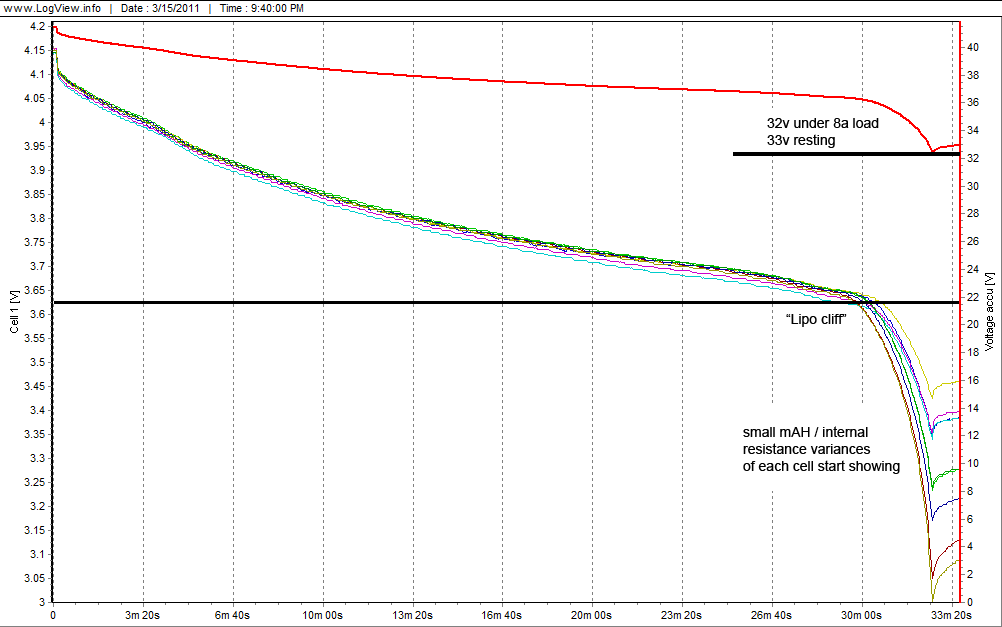I did this test accidentally.
I usually charge my nanotech from 3.7V to 4.1V. Since it's a 14s battery, I have a 10s set and 4s set. I break them up when charging. When charging both at 7.5A on my icharger 1010b+, I would get very close capacity when charging them. Typically it's around 13Ah. Well one day I set the 4s charger to charge to 4.2V. It turns out, I got around 1.7Ah difference between the 4.1V and 4.2V battery. Just to verify, I reset the 10s and then set it to 4.2V and continue the charge and it was 1.7Ah also. So indeed it's 1.7Ah. Keep in mind, I have a 22Ah Lipo setup.
So:
1.7Ah/22Ah = 7.7% additional.
I didn't check the bottom end, i.e. How much Ah is in 3.7V to 3.0V. I suspect it similar.
So you can considered 16% of your Lipo capacity is used to keep your Lipo pack running longer.
I usually charge my nanotech from 3.7V to 4.1V. Since it's a 14s battery, I have a 10s set and 4s set. I break them up when charging. When charging both at 7.5A on my icharger 1010b+, I would get very close capacity when charging them. Typically it's around 13Ah. Well one day I set the 4s charger to charge to 4.2V. It turns out, I got around 1.7Ah difference between the 4.1V and 4.2V battery. Just to verify, I reset the 10s and then set it to 4.2V and continue the charge and it was 1.7Ah also. So indeed it's 1.7Ah. Keep in mind, I have a 22Ah Lipo setup.
So:
1.7Ah/22Ah = 7.7% additional.
I didn't check the bottom end, i.e. How much Ah is in 3.7V to 3.0V. I suspect it similar.
So you can considered 16% of your Lipo capacity is used to keep your Lipo pack running longer.









